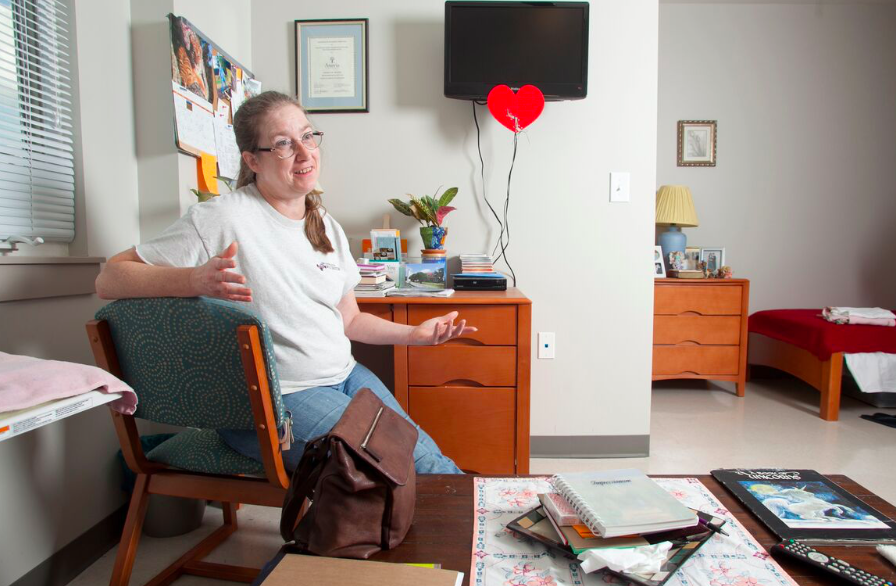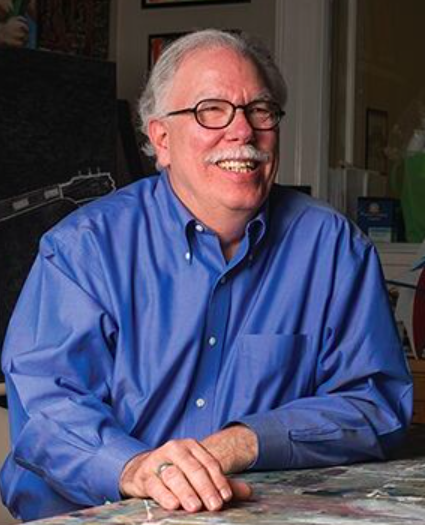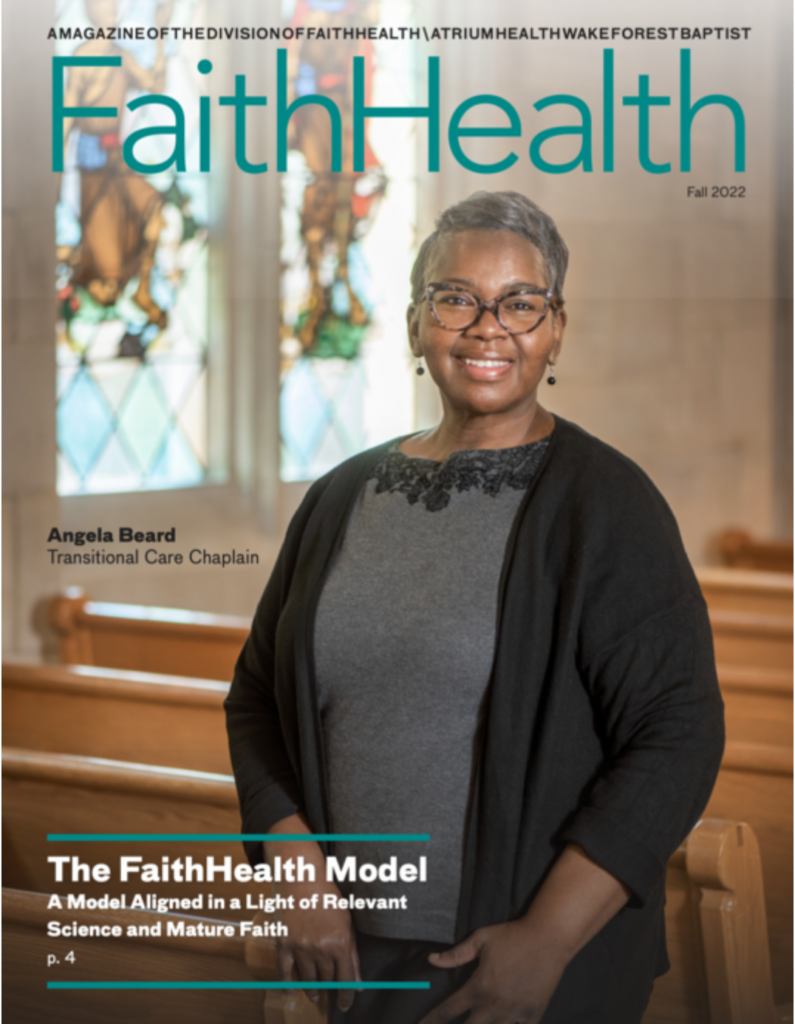Housing Is Healthcare at Charlotte’s Moore Place Apartments for the Homeless: A Q&A with Urban Ministry’s Dale Mullennix
Interview by Melanie Raskin
“Housing is healthcare.” That’s the point of view of Charlotte, NC’s Urban Ministry. Their Moore Place apartments for the chronically-homeless replaces the approximate $39,000 per person per year societal band-aid of shelter, ER/ED, jail and hospital with a $14,000 per person per year cure. The result of this HousingFirst initiative is an impressive 81 percent housing stability rate, and more importantly, the positive outcomes of health, stability and sobriety for the formerly homeless tenants. Charlotte Urban Ministry Executive Director Dale Mullennix explains how and why this innovative program is working.
What is Moore Place?
Moore Place is a HousingWorks program of the Urban Ministry Center in Charlotte, North Carolina. A solution to chronic homelessness, Moore Place opened in January 2012 and houses 85 former chronically-homeless adults in a permanent supportive housing (PSH) facility. It’s built on an evidence-based practice called HousingFirst, which recognizes a fundamental right to housing, no matter an individual’s mental health condition, physical disability or addiction.
Describe the HousingFirst model.
The mission is to get the homeless into permanent housing. When people have the firm foundation of a good night’s sleep, peace of mind and stability, they are better able to work on personal challenges, meet goals and remain housed. HousingFirst makes good sense, because it’s much easier to tackle sobriety in a safe and stable home than while sleeping under a bridge. It also makes good economic sense. Research has proven that the cost of permanent housing and support services is dramatically less than the expensive cycle of jails, ERs and shelter beds… and the benefits are far greater.
 What brought Charlotte Urban Ministry to the Moore Place solution? What was the problem you were trying to solve?
What brought Charlotte Urban Ministry to the Moore Place solution? What was the problem you were trying to solve?
We’ve been doing this for 23 years now and what we’ve learned is 85 percent of our clients were homeless because of some life change: a lost job, a death in the family, a divorce. If we connect them to the right resources, they get out of homelessness quickly, within 45 days. But then there’s the other 15 percent, the people who eat in our soup kitchen, take a shower and leave. What about them? How do we end their homelessness? We decided to do some research and asked a group of them we’d known for years where they spent their time. We learned it was five places: the ER/ED, as a patient in the hospital, in a mental health facility, in detox and in jail.
With permission, we talked to those places and learned that in three years, those 13 people had cost the community $1.4 million, and the biggest portion of that was medical care. That’s when we realized we needed a different approach, not “Hey, go find a job.” We had to address health first, and the best way to do that was to house them first. We learned, housing is healthcare.
Why does Moore Place work?
The key to our philosophy is, we believe housing is a basic human right and should not be a reward for clinical success. People who are homeless are usually asked to do something, and then they get housing. They would stay on the streets till they died with that strategy. Instead of asking them to solve their health, job, criminal and other problems, then give them housing, we did it the other way: we gave them housing first, then helped them address the rest of their needs.
And we went about filling our apartments a different way too. We used a vulnerability index tool: Instead of looking at the most successful candidates, we moved in 85 of the people who were most likely to die. And, thanks to a permanent home and our on-site social workers, clinical director, medical facility with nurses, psychiatrist and tenant services coordinator who offers classes and social events, Moore Place is succeeding. Our tenants can walk down the hall and take advantage of a shopping mall of important services, and not have to wait to see a social worker or get medical help.
hall and take advantage of a shopping mall of important services, and not have to wait to see a social worker or get medical help.
How do you evaluate success?
After our pilot year (2008) of housing 14 people, our investment of $10,000 had paid off in clients who were safer, happier and healthier. Eight of the fourteen had reconnected with family; all were getting income, had found work and were getting treatment. That was a two-year pilot, but the outcomes were so dramatically positive after Year 1, that we wanted to go ahead and build more apartments. We decided to raise $10 million in 2009, the depth of the reception. We were told we were crazy, but when we walked into the bank and said, “Do you want to spend $37,000 a person a year or just $10,800 a person a year and change lives for the better?” we did not raise $10 million…we raised more–$11.5 million. We proved we could free up resources to be reallocated and used more appropriately, while improving lives.
Once we built Moore Place, we hired researchers at UNC-Charlotte to evaluate our program and they found that Moore Place had reduced hospital bills $2.4 million, and slashed days in the hospital 62 percent and days in the ER 81 percent. What normally costs $39,000 per person per year in shelter, ER/ED, jail and hospital services are now costing around $14,000 per person per year, and the outcomes are much better. And, then there are our tenancy statistics: Our housing stability rate is 81 percent (our average tenant was homeless seven years; some as long as 25 years).
Now, we have nearly 200 people living in apartments throughout the city, not just our building. We just opened a resource center for those clients, a campus with social workers where clients can get the same menu of supportive services. And we are really excited this year because our nurses want to make home visits, so we are adding that service as well.
HUD (US Housing and Urban Development) has now identified HousingFirst as the first and best way to address homelessness.
Can you share some real-world stories?
In our 2008 pilot project, we put 14 clients we had known forever into apartments, with good access to social work support. We discovered 12 of the 14 qualified for disability income, but because they were homeless, they had never been able to seek it. We helped them get it.
 A woman with learning issues in one of our apartments (she could not read or write), asked her social worker to write a letter to the city for her to thank them for a place to live. She talked about being safe and feeling better, and how her goals are to learn to count and tell time. Now, she is getting certificates for classes and programs, and receiving good mentoring from a caseworker and volunteer. With all of these disabling conditions, she was still achieving her goals.
A woman with learning issues in one of our apartments (she could not read or write), asked her social worker to write a letter to the city for her to thank them for a place to live. She talked about being safe and feeling better, and how her goals are to learn to count and tell time. Now, she is getting certificates for classes and programs, and receiving good mentoring from a caseworker and volunteer. With all of these disabling conditions, she was still achieving her goals.
We learned that many of our clients know their ways around the hospital because they were there so often–both for health issues and because it was warm and safe. There was one man who was diagnosed with cancer, but he was at the hospital so often, he became like wallpaper, invisible. Now that he’s in a housing program, he has been treated and is in remission. If he were still on the street, he’d remain invisible, he’d never have a primary care physician. We find with housing first, the appropriate use of health care goes up, and the inappropriate use of the ED/ER goes down.
I’ll never forget one man I’d known for years who lived under a highway bridge. He was wet, cold and had critters chewing at him at night. And the only way he could get to sleep was to drink himself into a stupor. He said, “You’ve been telling me for years to get me into a program. That’s just one day and I’m always thinking about the next 10 minutes.” That was the real light bulb moment for me. He’s now one of our tenants and told me, “Now I’m in this apartment, now I’m safe and warm and wondering why I’m drinking so much. Can you help me?” We did. While living under the bridge, he resisted every effort over the years to address his drinking, but he knew why he was drinking. He said the alcohol was the most reliable relationship in his life, it always did what he needed it to do. For him housing was healthcare, it gave him a new perspective on his drinking and allowed him to look at his life and get into a program.
 As people across the state join the NC Way movement and create new ways to care for and lift up each other, how does Charlotte Urban Ministry’s Moore Place fit?
As people across the state join the NC Way movement and create new ways to care for and lift up each other, how does Charlotte Urban Ministry’s Moore Place fit?
This really speaks to me because the way we got into the housing business is because one of my board of trustee members was giving a tour to an author who had been homeless, and when she showed him the main campus, he asked, “Where are the beds?” She said, “We don’t have them, we refer to other agencies.” And he replied, “You do all this good work by day and lock them out by night? What are you going to do about that?” She came to me the next morning after a sleepless night and said God was calling her to do something about homelessness. So we did. Kathy Izard was a homemaker raising four kids and became the driving force in our 2008 Homeless to Homes project. She really pulled our community together, and told that story in her award-winning book Hundred Story Home: A Journey of Homelessness, Hope and Healing.
As you look back at what Charlotte Urban Ministry has accomplished, what’s your advice to other communities eager to rise to whatever challenge they are facing?
We have so many critical partnerships with our community: with landlords, the Housing Authority, the hospital, the county and others. People come together because they hear stories of something that works, so they can join a winning team. For too many years, nonprofits have sold a problem instead of a solution. That’s changing: People love to be part of a solution.
My advice? Look and see where God is busy, then go over and get in the middle of it. You don’t have to have all the answers. Be willing to learn from other people the way we did when we visited NYC, Seattle, Salt Lake City and others, and emulate their best practices. You don’t have to reinvent the wheel.
More on Housing First
Stakeholder Health’s online magazine (PDF) on Hospitals and Housing First
Hospital, Permanent Supportive Housing Resources

